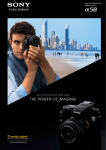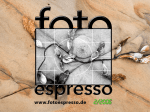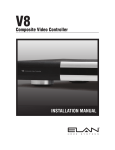Download Photoworld 4 2010 - Icon Publications Ltd
Transcript
photoworld 1 2010/#4 photoworld photoworld • autumn ’10 photoworld Cover: by Peter Karry As we progress towards higher megapixel counts – 12 became 14, now 14 becomes 16 – the early Konica Minolta 6 megapixel DSLRs may seem hopelessly out of date. But they are not. 6 megapixels can make a perfect 12 x 16 print. Our cover is an attempt to appease the Gods of Winter early, for once. Peter Karry used a Dynax 5D fitted with a 90mm Tamron macro lens, exposing for 1/2s at ƒ16 using a tripod. 1 2010/#4 photoworld CONTENTS 2 Editorial 3 The Translucent Truth – Sony’s Alpha 33 and 55 ‘DSLT’ cameras arrive and we test the 16 megapixel 55 with its GPS map-data recording. 10 Gallery – the pick of your images for the season. 14 The Speed of Sound – Greg Wright captures fellow musicians and their instruments with dynamics and movement. 18 The Third Dimension – with this issue you will find a 3D Red-Cyan viewer. Use it to get the 3D effect on these pages – and read about how to create 3D anaglyph prints yourself. 22 Cowboy in the Cathouse Shirley Kilpatrick took her Sigma 18-250mm OS lens and Alpha 700 body along to Europe’s biggest brothel, Pascha in Cologne, where fashion photographer Steve Thornton was staging a publicity shoot. 26 Quest 2011 Workshops, Information. Published by Icon Publications Limited Maxwell Place, Maxwell Lane Kelso, Scottish Borders TD5 7BB Tel: 01573 226032 Fax: 01573 226000 e-mail: [email protected] PUBLISHED AND EDITED BY David Kilpatrick FBIPP Hon. FMPA Shirley Kilpatrick MSc (Colour Science), BA Hons (OU) ADVERTISING MANAGER Richard Kilpatrick – 01562 777729 photoworld 2 Whilst every care is taken of MSS and photographs submitted all submissions remain the responsibility of the sender. Return postage and packing must be included. The views expressed in this magazine are those of individual contributors and do not represent the views or policies of Icon Publications Ltd unless otherwise stated. This issue © 2010 Icon Publications Limited. All rights reserved. No part of this publication may be reproduced by any means without permission. Photoworld magazine is an independent quarterly from Icon Publications Ltd which provides free membership of the Photoworld Club UK/Photoclubalpha. The aim of the Club is to provide support, information, inspiration and activities for owners of Minolta, Konica Minolta, Seagull, Sony Alpha and other equipment compatible with the Minolta SR, MC, MD, VS, AF, AF-xi and AF-D mounts. Membership of the Club is not dependent on subscription and you may also sign up, receiving emailed information only but no magazine, through www. photostore-uk.com, www.minoltaclub.co.uk or www.photoclubalpha. com. Subscriptions cost £19.95 for four issues (UK/Europe), £23.95 (Rest of World), payable to Icon Publications Ltd, Maxwell Place, Maxwell Lane, Kelso, Scottish Borders TD5 7BB This publication has no connection with Konica Minolta Holdings or Sony Corporation, or the brands mentioned. The logo typeface is ‘Minolta Classic’ designed by Justin Bailey. ILC, SLR, ILT? IN the last issue we introduced the term ‘ILC’ used by Sony for ‘Interchangeable Lens Compact’. This term competes with ‘CSC’ used by other makers – Compact System Camera. But why are we stuck with the terms we use now? For example, SLR. Single Lens Reflex. Single lens? Mine has loads of lenses! What a very confusing term for anyone who was not a camera user in the 1950s, when the Twin Lens Reflex was the most popular enthusiast type. Single Lens Reflex distinguishes the instantreturn mirror 35mm design (remember that term?) from the double lensed, fixed mirror TLR. It is an obsolete term 60 years after the Contax S, Exakta, Wrayflex and other pioneers appeared on the post-war market. Now Sony says ‘Single Lens Translucent’. Translucent is a bad choice of word to describe a transparent but semi-silvered mirror. There’s no quality of diffusion or opacity about it. And ‘Single Lens’ now means nothing at all. If they want to call the camera an SLT or DSLT at least change that to Single Lens Transflex. That includes the ‘flex’ bit which indicates a mirror is present, if only for AF. But even better would be ILC and ILT – Interchangeable Lens Compact, and Interchangeable Lens Transflex. Plus, of course, ILR – Interchangeable Lens Reflex. C can stand for camera, not just for compact, in case full format versions appear. If it’s too much change to introduce, let’s call them System Lens not Interchangeable – SLC, SLT, SLR. Or DSLC, DSLT, DSLR. And TLR still works! – DK Á Translucent future The Alpha 55 and 33 transflex mirror cameras were launched just before photokina, held in a balmy late September Cologne. The conventional Alpha 560 and 580 with HD video join them in the shops soon. I have finally got over my indignation that Sony should have abused our language by hijacking the word ‘translucent’ to mean something it does not, in any modern lexicon. But it’s their own loss, as you can not copyright a regular word as a trademark in the USA and many other markets and translucent is very much a regular word. You won’t even find it in the list of Sony and other trademarks printed at the end of the user manual No matter how they try to protect it, I will still be able to describe anything as translucent if it possesses that attribute! The Sony ‘SLT’ cameras – Single Lens Translucent as opposed to Single Lens Reflex – do not of course use anything translucent, they actually use a transparent semi-silvered mirror, a transmissive-reflective mirror sometimes referred to as a trans-mirror or a transflective mirror. It is not a pellicle mirror; as I explained in my last introduction to the Summer magazine, pellicle refers to a stretched ultra-thin film of plastic. The Sony mirror is rigid very thin glass, in a plastic frame, to allow it to be hinged up for sensor cleaning. So, to all those magazines and websites happily spouting forth about ‘pellix’ mirrors (a copyright trade name of Canon – see above!) or ‘pelical’ mirrors (ones with very large beaks and a fishing habit), a simple message. Just call it Translucent. We’ll get used to it, just the same way we got used to calling the process of lending the bank our money ‘saving’ or ‘investment’ or ‘deposit’. Alpha 55/33 principle By allowing over two-thirds of the image forming light to reach the CMOS sensor through a semi-silvered mirror which does not move, Sony has enabled quiet shooting and HD video along with high resolution off-sensor live view. In these respects, the The Alpha 55 is a very compact body design. The rear screen can be rotated for vertical shots The left hand end has covers for USB, HDMI, wired remote and for an external stereo microphone Alpha 33 is basically a NEX-5 (both share the same 14 megapixel sensor) with an A-mount body. The Alpha 55 uses a new 16 megapixel sensor with further enhancements to image processing. The Translucent Mirror is not placed at 45° like a regular SLR mirror, because it does not have to reflect the entire image on to a focusing screen. It only has to reflect Not Cologne! Sony PR image. 3 photoworld The viewfinder has Eye-Start for focus, which is also used to auto switch from rear screen to EVF. The right hand end controls of the Alpha 55/33 are packed into a very limited space. Even so they fall neatly to hand. The red ‘Movie’ button starts filming instantly – there is no need to enter a movie mode first. Buttons access most vital functions. It may be easier to find the Alpha 55 and 33 models in kit form with lens, than body only, until it is more widely stocked. From the side, you can see how extended the viewfinder eyepiece for the electronic screen is (not unlike the old Konica Minolta A2 or A200). When the camera is switched off, you see nothing at all; this takes some getting used to. Below, the small size of the A55 can be seen along with its Translucent mirror. The clip at the bottom allows this to be lifted manually for sensor cleaning. The A55 handgrip may be small, but it’s very deep and offers a really secure grasp even for larger hands. photoworld 4 the centre of the image, to cover a new 15-point AF module which is placed slightly forward of the position of a focusing screen, towards the lens mount, and angled. The mirror is at a flatter angle to the sensor and lens, which produces a number of benefits, some of these very technical. Digital sensors are very sensitive to polarised light. With or without microlenses and covering filters, their reflective quality is specular meaning that towards the edge of images light can be lost by reflection due to its angle of incidence. Such reflection is accompanied by polarisation of the light, both reflected and received. This is why polarising filters can seem to have unpredictable or excessive effects on digital sensors, compared to their effect on film – and it’s also why live view, as on the NEX-5, has greatly improved the use of polarisers and the accuracy of exposure given when using them. Any semi-silvered mirror also has a polarising effect, and in a typical 45° mirror this can vary from top to bottom if the lens exit pupil is very The rear LCD can be turned to face the camera back, for protection and to eliminate stray light. Images can be reviewed through the EVF after shooting – but the EVF uses much more battery power. close to the focal plane (as with wide-angles). By placing the mirror more parallel to the sensor, any such shift is minimal. Even so, great care should be taken to observe the results carefully using live view, if you use a polariser on a wide-angle fitted to one of the new Translucent models. The one-third or so of light diverted to the focus module is never interrupted, meaning phase detect focusing (the traditional ‘continuous AF’ with predictive focus that we are used to) can operate during live view and HD filming. The new module has three cross-type sensors, to give greater accuracy. These are for some reason organised as a vertical group when viewing a horizontal picture. We expected them to be arranged lengthwise, but not so; they are obviously not for tracking subjects panned or followed in the usual way when using the camera for sports. In place of the focusing screen and prism, but occupying exactly the same general shape of top ‘bulge’, there is a new EVF – an electronic viewfinder similar to that found on the Konica Minolta A2 or A200, or Sony Cyber-shot DSC R-1. This finder has a long eyepiece unit which sticks out further than normal, keeping the face and nose away from the rear LCD screen of the cameras. The EVF carries full information and can look rather cluttered, as this includes a useful horizon-levelling display to help you keep everything straight. You can of course turn this off (in fact, you can have it on the rear 3 inch screen or the EVF only, either way, at choice, or on both, or neither). The rear screen is now fully articulated much like the Nikon D5000 and the new Canon EOS 60D, with a central rotating hingepoint that allows it be seen from the front of the camera (below the body, not ideal) and to operate as a waist-level finder for vertical compositions. Like the D5000, this screen can be turned right round to face the camera body and be protected. The user then just has the eye-level EVF to go by. Auto switching between rear screen and EVF is possible, and you can also divert both by simply plugging in a MiniHDMI cable connected to a video monitor or a TV. The display will then appear to surprisingly high resolution on your larger screen. As for looking through the finder, the image appears reassuringly large and bright and certainly sharp enough to judge focus. Enlarged manual focusing at 7X Shooting information is overlaid on the image view whether on the rear screen or in the finder GPS accurately recorded the location from which this view was taken (Hume Castle) but often took a minute or two to register a new location after driving a few miles. Viewed using a Lightroom Plugin. and 14X scale leaves no doubt when you’re on the spot. But if you pan or move the camera, a rainbow of coloured flickering edges appears while the video image tracks your movement, only settling down when the camera is stable. It is an effect which some will find so distracting they can’t consider this an alternative to a true optical viewfinder. There are distinct benefits to the EVF. Actual exposure, white balance, contrast and other image qualities can be previewed including very accurate depth of field using the reinstated stop down preview button. Just pressing the AE Lock button will switch the finder and screen into ‘exposure and effects’ preview mode, allowing you to adjust visually. It can also give a better image in dark conditions, but some will find the extra brightness reduces their ability to see once the eye is removed from the camera. The screen, though a 100% view and larger visually than models like the A350, does not look like a normal vierwfinder as there is a substantial darker margin all round which carries some information such as the focus confirm light and anti-shake level bars. Shooting information is still overlaid on the viewing image, despite there being loads of active display space (1.44 million dots total, only 1.15 million used for the image). If you use 16:9 ratio for stills, or shoot movies, more use is made of the 5 photoworld screen area and you get a bigger view – the reverse of the cropping which usually happens. You can switch from a full display including battery status, GPS and so on to one with just shutter and aperture data, or this with the added horizon-level indicator. You can’t opt for a completely plain view. Brightness and colour reflect the settings in use, including picture style, exposure over-ride or manual shutter and aperture. There is an issue with using the A55/33 with studio or non-dedicated flash; since it has no optical finder, the required manual settings result in a completely black screen. There is no easy workround for this except to fit a manual flash (perhaps an old Minolta one) used on low power as a trigger. Ultimately it will be your personal like or dislike for the EVF which decides whether you can live with this camera type. Exposure metering with these models does not use a metering cell. Instead, the main sensor provides 1000-zone metering with all the usual weighting and spot functions, as on the NEX. It remains to be seen how accurate this is, given the tendency of the NEX-3 and 5 to be rather generous. Advanced features I bought an Alpha 55 despite the Alpha 33 being available earlier and 14 megapixels being ‘enough’. My reason was simple – the builtin Global Positioning System, GPS. I have used the Sony GPS-CK1 accessory in the past but there are some real issues with this. First of all, Sony lives in the dark ages and only makes its Picture Motion Browser for Windows PCs, and only this software can handle post-addition of GPS data to files (I know there are many utilities). It only adds to JPEGs, and its accuracy depends on how precisely your camera’s date and time setting synchronises with the satellite signal. The Alpha 55 solves all this in one go and adds more. The GPS is in the camera, you can’t forget it or leave it in the car while you walk a few hundred yards. It is always in perfect time synchronisation with the camera, as it embeds the position when you shoot. It tags raw files as photoworld 6 Above: a standard sweep panorama made with the 16-80mm Carl Zeiss lens (as for the landscape on the previous page. The level of detail in the panorama with this lens was excellent. Below, an extreme into-the-light shot shows flare patches. The sky appeared to be plain grey through the viewfinder. Smile Shutter. Many people will love these features and they are enabled by default when you get the camera. To enable magnified Live View manual focusing, a menu item must be set. This converts the Delete button on the camera back into a Magnify button. It also works when AF has been locked, and depending on the lens in use you can fine-tune focus. However, it’s a good idea to move the switch to MF after doing so, as when you press the shutter again this setting can be lost and the lens refocused. There is no marking on the ‘Trash’ button to indicate this secondary function. Haunted by ghosts well as JPEGs, and does not require an archaic PC-only program (this is not polemic, Picture Motion Browser really is a legacy program Sony has not bothered to develop) to do so. The A55 GPS does not just record your position on the map when you took the shot. It records your elevation above sea level and the compass orientation (which I have not been able to view, or confirm as a feature). It is said to be a full orientation tagging which means you can be absolutely sure which of those anonymous-looking mountain peaks is which! For me, this single feature is the main reason I have gone for the A55. We will come later to the A560 and A580, conventional DSLRs without the transflective mirror; I would have preferred an Alpha 580, but this lacks the GPS. The second important advanced feature of the A55 is its 10 frames per second continuous burst shooting. Combined with a 16.2 megapixel sensor, this is an amazing amount of data to shift, and the camera has a buffer twice the size of the A33. Even so, it does have slightly more restriction on numbers of shots and card writing times, compared to the modest 7 frames per second and 14.2 megapixel sensor. The A55 also loses out on video recording time. The sensor gets hotter, and on the whole you will get about 20% less continuous video before the overheat limits your take. Both cameras are most limited if you use Super Steady Shot, sensor-based stabilisation, during video. The NEX models of course lack this, but the A55 and A33, A560 and A580 all have SSS during filming. All have limited recording times (much less than the 29 minutes maximum, as short as 7 minutes) when SSS is enabled. Video shooters will be more than happy with the built-in stereo microphone, cleverly placed either side of the ‘prism’ housing to imitate human ear stereo sound reception. You can also plug in a stereo mic and the camera will provide 5V phantom power, making it possible to use a wide range of computer, telephony and field recording mics. During movie shooting, AF is still active because it uses the phase detection sensors. It is surprisingly fast-reacting and worked well with our Sigma 18-250mm OS zoom. The A55 and A33 have all the innovative functions of the NEX from Sweep Panorama and 3D Movie Panorama, to 3-shot Auto HDR, and very high ISO. Both go to ISO 12,800 and have a multishot mode which creates acceptable ISO 25,600 – if you can really call anything which fires a burst of frames a true ISO speed rating. The Anti Motion Blur function of NEX is missing, as is the Twilight mode which effectively becomes the 25,600 setting instead. And then you have the things I simply don’t use, like Face Detection and Now to the crunch! The Alpha 33 and 55 put an extra layer of glass, at an angle, between the lens and the sensor. Is this a problem? Well, an extra layer of glass certainly is not. Kodak DSLRs had removable filters, and Sigma’s DSLRs have a hot-mirror infra red blocking filter which sits between the mirror and the lens. Even their latest 48 megapixel SD-1 supercamera will have this feature. All sensors already have one or two layers of glass covering them. Glass at an angle is not quite the same. Within its thickness, despite coatings, it can produce a very faint ghost image which is offset a few pixels lower on the sensor. It will only show from very bright light sources or areas. but it’s present, and in theory it degrades the whole image very slightly. I have seen some images in adverse conditions, from the A33 and A55, which I would not consider up to the required minimum standard for professional work. But it’s not a professional camera. And I’ve seen others which are fine. I trust my own ability to assess the way my lenses interact with the hardware, and to spot likely trouble in my chosen subjects. I’m taking the risk and I am confident that even with the extreme demands made on lens quality by a 16.2 megapixel sensor, I’ll see good results. The Alpha 55 is going to be my main travel camera in place of the Alpha 900 because of that GPS tagging feature. It’s going to have to be good! Video and sound We will report in more detail on video, and post videos on internet, after this magazine goes to press. The same goes for the 10fps drive function; it needs a subject to justify using it, and in the short time available nothing ‘right’ has turned up. Initially I handed the camera to our daughter Ailsa, and let her film in the badly-lit, high sound pressure environment of our pub Scottish (and world!) music night – including a virtuoso African drummer. The result was surprisingly well exposed, with rapid refocusing as the camera was aimed at different people, and really clear undistorted sound with a high level of stereo separation. Ailsa found the rear screen much better than the EVF for filming, allowing more freedom in positioning the camera and a clearer view of the shot. Like many people today she is used to filming with a screen to compose on with her iPhone. The sound from the NEX was already good, but the SLT built-in microphone format appears even better. In quiet conditions, you will hear lens focusing noises and unless an SSM lens is used they may be obtrusive. The 18-55mm SAM kit lens is only just acceptable, most screw drive AF lenses actually sound quieter, and the 30mm ƒ2.8 SAM macro was almost unusable – definitely better set to manual focus. No other SLR-format camera can focus during video in quite the same way. That said, you may prefer to set manual focus for anything except casual filming. The Alpha 560/580 Take the video functions of the 33/55/ NEX models, and the two sensors from the 33 and 55, put them in a 550style body with a few tweaks including Autofocus Off-Sensor Live View The line-up as seen by Sony – 10 cameras, three colour variants. This excludes several recent models still on sale. The Alpha 580 will be a better choice for many photographers; the optical finder is superior for landscapes and shows lighting and contrast accurately. There is less risk of flare from reflections within the camera in challening light conditions. and you get the 14 megapixel Alpha 560, and 16 megapixel Alpha 580. Both ‘only’ manage the same 7fps as the NEX, Alpha 550 or 33 and getting the 580 does not get you 10fps. Nor do you get the new 15-zone AF sensor, or off-sensor metering. With a conventional mirror mechanism, the 580 and its 16.2 megapixel resolution from a 16.6 megapixel sensor should deliver the highest res telephoto images from any Alpha body to date. With the superior high ISO, and no transflective mirror light losses, the 7fps burst rate and its 1.5X sensor factor this could be the ultimate wildlife and sports Alpha. And then I read the specifications and realise that the Alpha 580 has no GPS. Of the four new cameras, only the Alpha 55 has GPS (and that is restricted to certain markets, fortunately including the UK) – look for the product code 55V). It may seem a trivial feature, but if want it, you have only one choice right now. Why on earth doesn’t the 580 have GPS too? Perhaps because the forthcoming Alpha 750 or whatever its number will be – or the rumoured Translucent mirror Alpha 77 – will have GPS. Hyperactive Sony This year has been a nightmare for Photoworld. We have set out to keep up with Sony cameras, and that does not mean trying to judge the gear on the basis of one-week loan periods. Sony is such a huge consumer brand that dozens of popular magazines, TV stations and national newspapers request their gear to feature. Websites like dPreview often get the cameras in advance of launch, making it impossible for any other websites to ‘compete’ in the extremely time-sensitive matter of going live with a report. Despite this, we have to work fast as readers need to know whether a camera model is right for them without waiting three months for our next edition. We have avoided buying the Alpha 290 or 390 mini-generation and purchased an Alpha 550 to represent the 450/500/550 period. I chose a NEX-5 to work with the mirrorless E-system. It all adds up financially, particularly if I happen to like a camera and do not sell it to make way for the next generation. With anything up to four new product rollouts in a single year and a baffling total of cameras now into the teens, Sony is fast leaving me behind. I know that Gary Friedman is having the same issue with his e-Book manuals; he wants to cover every camera, but how do you handle eight new launches within a six-month period? Like our company, he simply has to buy and sell every camera in turn. When I did get a loan camera in the form of the NEX-3, it was one working week only. The Alpha 55 became available from Jessop just in time to let me run a few vital tests, get out and shoot some pictures in reasonable light, and hand it round to get opinions on the viewfinder. This experience puts me, I guess, in the same position as a typical buyer who may have holiday or a family event coming up and decides they want the GPS or the movie function. They order well in advance… but as the date comes closer, dealers are unable to say exactly when the camera will be shipped. I hope that Sony settles down. I hope that innovation moves back to a once-a-year cycle, like the A700 and A900. Otherwise, I fear I’m going to lose interest in any new products. We seem to have done nothing but write about what’s new without even the time to use the kit and write about techniques and applications instead. At photokina, I bumped into Roger Hicks and Frances Schultz, two old friends and fellow photo writers. No new gear for them! Newish, admittedly, Leica digital bodies but every chance of lasting for many years. That is how I see my Alpha 900 – as a camera which may still be working away ten years from now. But I still like many of the new features appearing on lesser cameras. When will they have finished and got EVERY feature you can possibly want? – David Kilpatrick Á A900, A850, A580, A560, A55, A33, A390, A290, NEX-5, NEX-3 with A77 and/or A750 still to come 7 photoworld Sony at photokina 2010 E very two years, we attend photokina in Cologne. This year, remembering that three days proved a very tight schedule in 2008, Shirley and I went for an entire week (because the flights and hotel worked out as costing no more than nipping over for a couple of nights on the peak days of the show). This gave us time to attend the Sony press conference, for which a full NEX-5 video recording in three parts can be found on the photoclubalpha website and YouTube. We were also able to meet Paul Genge on the Sony stand which was on a scale far greater than any previous show. It was not just a larger stand, it was far more visitor-friendly and interactive with loads of cameras and lenses to handle and a range of odd subjects to shoot. These included a BMX bike half-pipe which provided a target for the 7fps or 10fps motor drive bursts of the latest cameras. By far the greatest thing to happen was the transformation of Sony’s public image in a single half hour. All the press had already attended Samsung’s conference, at which it was made very clear Samsung would not release details of their new i-Fn lens mount to third parties and indeed preferred it if no-one ever made any accessories for the NX range. They wanted to keep their customers to themselves and they actually said so to the entire world press. Sony’s conference then featured Toru Katsumoto with a delighted smile on his face announcing how wonderful it was that all these third party companies had started to make adaptors for NEX. It was, he said, allowing people to rediscover photography through all the lenses going back 100 years which could be used again thanks to the 18mm slim back focus design and wide bayonet mount of NEX. Then he announced that Sony was going to make the mount specifications public and would be working with selected third party companies to develop independent NEX accessories. He even hinted – clearly – that this might include camera bodies from other makers using the NEX mount. Later on, we learned that Cosina is a likely partner with its Voigtländer brand already being used for NEX adaptors. They have suitable lenses waiting to be made in NEX mount (manual focus, but superb glass) and they even have a history of making photoworld 8 Top: photokina entrance. Above and below: the Sony stand, with half-pipe stunt bicycle action and African safari themes. rangefinder bodies with digital sensors – the Epson RD-1. So we might yet see a Leica-style body with the NEX mount from that direction. Another company they favour working with is the German mount adaptor and bellows system maker Novoflex. But in the Chinese product halls, we found Kipon showing tilt adaptors for Nikon, Leica R, Contax-Yashica and 42mm thread lenses. The adaptor has a ball and socket type action and simply fits between the NEX body and the manual lens. LensBaby showed a tilt version of their Composer with a similar ball and socket movement, designed only for Nikon fit lenses – but they too have promised other fits will be available. We are just waiting for one to appear in Minolta MD! On the Sony stand, a cabinet was full of these third party accessories and adapted lenses. It was remarkable to see how Sony, a company once regarded as the most jealous custodian of its proprietary designs and systems, had grasped the value of this explosion in NEX use by serious photographers with legacy glass from older systems. We showed this in our last issue, in full, with large pictures of many optical systems attached to NEX. Indeed, it was the very first message I sent out about NEX from the press conference in Croatia – this camera’s mount will allow the use of almost every lens ever made. I think the popularity of NEX with serious photographers was something that took Sony by surprise. They built the camera as an upgrade for point and shoot users, but its success has been more visible in the enthusiast NEX firmware v3 S ony has released the firmware upgrades which were promised at photokina for the NEX models NEX-5 and NEX-3, and the Alpha mount lens adaptor LA-EA1. Please note: five hours after their press release went live, the upgrade is still not showing up at the URL listed below. Readers in Europe can download the firmware upgrade from: http://support.sony-europe.com/hub/hub.html Autofocus is now supported when using the NEX-5/NEX-3 with 14 lenses from the full range of A-mount optics by Sony and Carl Zeiss that includes telephotos, primes and zooms. Aperture settings can be maintained during HD movie recording, and system menu operation has been streamlined alongside other usability improvements. Autofocus with A-mount lenses Single-shot autofocus is supported with 14 optional A-mount SAM and SSM lens models3 when used with the optional LA-EA1 Mount Adaptor. Single-shot AF is also possible while in movie recording mode by pressing the shutter button halfway down. Support for AF operation with A-mount lenses also requires a separate firmware upgrade for the LA-EA1. Aperture priority with video recording HD video can be shot while maintaining constant aperture, either in A (aperture priority) mode or in iAuto mode with background defocus activated. This aids the simple creation of beautiful background defocus effects during movie recording. Soft key settings It’s possible to customise functions of two of the three soft keys on the camera’s rear panel. Functions that can be assigned include Shooting Mode, Shooting Tips, Precision Digital Zoom, ISO, White Balance, Metering Mode, Flash Compensation, DRO, Auto HDR, Creative Style, MF Assist and AF Area. Above: E-system expansion on show, Kipon Contax-Yashica tilt adaptor, and new GN20 flash for NEX. Below: the 500mm ƒ4 G SSM in bare metal. and ‘downsized second system’ bracket. Even now, three months after the E-system hit the retail shelves, we are hearing from professionals who buy the pocketable camera with its 16mm and 18-55mm lens options. On the Alpha front, the new ‘DSLT’ models Alpha 33 and 55 were the big news with the conventional 560 and 580 taking a back seat. It was great to see so many Alpha bodies on the Carl Zeiss stand, where CZ lenses of many types were mounted on a wide range of cameras. In a cabinet, Sony showed the forthcoming 500mm ƒ4 Apo G SSM in an unpainted form to display the metal construction. A mockup or prototype of the Alpha 700 replacement was also shown, with a lens which is thought to be a 16-80mm ƒ2.8-3.5 Carl Zeiss SSM – though Paul Genge hinted it might be a more affordable Sony SAM design. And a whole range of new lenses was announced for the NEX system including a CZ fast wide angle, a premium grade standard zoom, a wide zoom, a fixed medium telephoto, a macro lens and a portrait lens. These will be rolled out over 2011-2012 giving the NEX system a range of nine E-mount lenses. We’ll be reporting on all this in future issues. – D&SK Á Menu start When ‘Menu’ is selected, there’s now the option to display either the main menu screen or the last parameter set. This simplifies quick readjustment of recently-selected functions and settings. MF Assist An enlarged image portion can be displayed on screen with userselectable duration while in MF (Manual Focus) Assist mode. MF Assist operation has also been improved. The previously-chosen magnified image portion can now be maintained when MF Assist is re-selected, making repeated checks of fine focus quicker and more convenient. System requirements PC: Windows XP SP3 (64-bit and Starter editions not supported); Windows Vista SP2 (Starter edition not supported); Windows 7 Macintosh: OS X Ver.10.5 or later All platforms: Hard disk space: min. 200MB / RAM: min. 512MB. Upgrade requires USB cable connection between computer and NEX-5/NEX-3. Autofocus function is supported with these A-mount lenses: SAM lenses • DT 18-55mm F3.5-5.6 SAM [SAL1855] • 28-75mm F2.8 SAM [SAL2875], • DT 55-200mm F4-5.6 SAM [SAL55200-2] • DT 30mm F2.8 Macro SAM [SAL30M28] • DT 35mm F1.8 SAM [SAL35F18] • DT 50mm F1.8 SAM [SAL50F18] • 85mm F2.8 SAM [SAL85F28] SSM lenses • Vario-Sonnar T* 16-35mm F2.8 ZA SSM [SAL1635Z] • Vario-Sonnar T* 24-70mm F2.8 ZA SSM [SAL2470Z] • Distagon T* 24mm F2 ZA SSM [SAL24F20Z] • 70-200mm F2.8 G [SAL70200G] • 70-300mm F4.5-5.6 G SSM [SAL70300G] • 70-400mm F4-5.6 G SSM [SAL70400G] • 300mm F2.8 G [SAL300F28G] 9 Á photoworld gallery photoworld 10 Golden seasons For some, the world turns to drab brown as winter arrives – but others see the colours of bronze, copper and gold glinting in the low sun. Carl McKie photographed the red fox in snow using his Alpha 700, Minolta 400mm ƒ4.5 at ƒ6.3, ISO 400 and 1/160th. Above, still loyal to film, John Gilkerson photographed Glenlochsie in April 2009 on a coach holiday based at Glenshee. Fuji Velvia 50, Minolta Dynax 7, 24-105mm at 105mm, 1/6 at f22, tripod. Below left, Tony Jones found these teasel heads in winter and isolated them from the out of focus background using a 135mm lens at ƒ8, with ISO 400 on his Alpha 100 giving a very brief shutter speed of 1/1250th. T o enter your own pictures for future Gallery pages, just send digital files. Images should be no larger than 2000 x 3000 pixels or the equivalent data size for panoramas (6 megapixels). They should saved as AdobeRGB or sRGB JPEG files, with embedded ICC profile and intact EXIF data, to level 8 quality (High) or better. Your details, caption, copyright information, website URL, email address etc should be written into the file EXIF or IPTC fields – use 'File Information' in Photoshop File Menu to view and edit these text fields. You may also put caption, website, etc information in a separate text document attachment or in the body of your email. The pictures must have been taken on Minolta, Konica Minolta, Sony or Sony Alpha equipment. Scans from slides, negatives or prints are accepted and full details must be provided of equipment used. EXIF data will be used to confirm the origin of digital entries. Send by email to: [email protected] You may also send by post on CD or DVD to : Photoworld Gallery, Icon Publications Ltd, Maxwell Place, Maxwell Lane, Kelso, Scottish Borders TD5 7BB. You may enter as many images as you like at any time, including your name and address and all relevant caption details. Gallery entries will be considered for cover or portfolio use and web editions. Each contributor chosen receives a year’s subscription/renewal, or a prize of similar value which may be a photographic book or other item. Ë 11 photoworld Aboe:by Dr Francis Vallely of Pately Bridge, Yorkshire. This is our ideal of an Autumn scene – even, if we are lucky, in November. Taken in the grounds of Fountains Abbey, Studley Royal Park. Below: perhaps not an ideal way to see those leaves hanging on, but a great experience for all involved – Peter Karry joined one of the Quest photo trips organised by Colin Westgate (see page 26) and found this frozen waterfall in Glencoe, Scottish Highlands. photoworld 12 A small world in a suburban garden ES SU IS CK NE A B LI N O N UR T GE R PA ADE RE R FO NG N I ADI M E O ZO SY R EA Photoworld & Minolta Image electronic editions on YUDU GLENN TURNER has sent us a series of macro images which show the interesting natural history that can be seen on our own doorsteps, even in suburbia. “We don’t have a pond, but we get quite a lot of frogs and toads at various times of the year. I photographed this large frog on the patio, handholding the camera and focusing the 100mm macro lens on the amazing eyes. “The little toadstool was growing in our lawn, and appears to have been a tasty meal – maybe for a mouse? I used the Sony 30mm macro lens for this, holding the Alpha 700 on a beanbag on the grass and using the 2-second delayed shutter release option to try to reduce shake. There was no alternative but to grovel about on the ground to line up the pic (and the frog one too). Maybe one day I’ll get an Alpha with a fold-out live-view screen which will make things a bit more comfortable for my knees! “The third shot is very hungry and exotic-looking caterpillar of a species of moth called the Vapourer. I was impressed by the neat way it was munching its way through a rose bud, just like a boiled egg with its top cut off! This was lit with an HVL-F58AM flash mounted on the camera, in combination with the 100mm macro without its lenshood.” You can now subscribe for the future and get a digital edition instead of printed – or you can have both. It’s only £10 a year for digital only, and you get access to hundreds of pages of back issues and extra articles. We have converted over 24 previous issues already. Visit http://www.yudu.com/albums/ items/51212 to read on-screen or download to read later – print pages, print articles, print whole issues. Never lose your copy again… See www.photoclubalpha.com too Á 13 photoworld The speed of sound Greg Wright focused on the details of local musicians and their instruments after rediscovering the mandolin. Now that every household once again has a ukulele, he’s got some tips for moving music photographs. I n the summer of 2008 my son, like many boys, decided that he wanted to learn to play the guitar. I took him to a music shop and we went home with a small sized instrument for him. When I was there, I noticed a mandolin hanging on the wall. I have wanted to play one of these for a long time, ever since I went to concerts by bands such as Jethro Tull, Fairport Convention and Lindisfarne who all featured this intriguing small instrument. A few weeks later I did buy myself a mandolin and started to play. Fairly soon – probably too soon – I was asked to play with a group of musician friends. It was nothing too serious, just making music and enjoying each other’s company. Not surprisingly, soon afterwards, I started taking a camera along with me. A photograph captures an instant in time as immortalised by Henri Cartier-Bresson’s idea of the ‘decisive moment’, whereas music exists through time. It is the relationship between the notes, their length and pitch that defines music. It is the progress through a piece of music that gives it its emotion. When I was photographing the other musicians I really wanted to capture this aspect of music making because music cannot exist in an instant. It is dynamic by nature which is fundamentally the opposite of photography. With this aim in mind I wanted to show this movement in my images. This was fairly easy as I just had to keep the shutter open for long enough to get a blurred image. By trial and error I settled on an exposure time of between one and five seconds to get the appropriate amount of movement, depending on the music and the musician. I selected the aperture to ensure that the shutter speed was right. This was fairly easy to do with my Sony A100 as it has a minimum ISO of 100. With other cameras that have a higher minimum ISO I might have needed to use neutral density filters to achieve the necessary slow shutter speed. Sometimes this meant I had to use a very small aperture but this was not a problem photoworld 14 Above: Looking along the neck of a fiddle in action. Sony A100 with Sony 18-70mm lens set at 60mm, 1.6s at f10, ISO 100. Facing page top: Playing a bodhrán. Sony A100 with Sony 18-70mm lens set at 40mm, 4s at f11, ISO 100. Facing page bottom: Picking out the melody on an electro-acoustic mandolin. Sony A100 with Sony 18-70mm lens set at 60mm, 2.5s at f25, ISO 100. because the motion blur would smear out any resulting diffraction. I made sure that all the motion came from the instrument and the musician by mounting the camera on a tripod. This also allowed me to concentrate on the right moment to make the exposure rather than thinking about where I was pointing the camera. Often I asked the musicians to repeat the same short passage several times so that I could get a feel for their movements and their rhythm. This also helped me to time my shots. Sharp not flat Above: Detail of an f-hole in the top of an acoustic mandolin. Sony A100, Sigma 70mm macro lens, 1/160s at f/2.8, ISO 100. Having said all of this, a blurred image of someone playing an instrument is still a blurred image and is not very interesting. The photos needed something to anchor them and give them a solid foundation. To get this anchor, I added a blip of flash to the mix. I used the wireless-flash facility to fire my Minolta 3600HS(D) flash. I chose the position of the flash to minimise unsightly reflections from the instruments which often have a glossy, reflective finish. I also used exposure compensation to reduce the effect of the flash so that the static part of the image did not overwhelm the dynamic element. For the majority of the pictures I found an exposure compensation setting of -2 worked best but of course there was a lot of trial and error. Effectively I was using a slow-sync technique along with fill-in flash. As always, the choice of background is vital to the success for an image. Sometimes I managed to use part of the musical instrument itself as the background. On other occasions I used a black cloth so that the background did not draw the eye away from the subject and take the viewer’s attention. Not only that, the dark background adds to the atmosphere of the shot. A lot of musical performances take place in subdued lighting and the dark background reflected this. I found that I could make these images in a surprisingly small space. There was no need for a conventional studio at all. I could set the tripod up fairly close to the subject as I only wanted to include a small portion of the player and the instrument in the frame - usually just one hand on the instrument. I found that a focal length of around 70mm (105mm, 35mm equivalent) was about right to fill the frame with the part of the subject I was interested in at the same time as providing sufficient distance between the camera and the subject. As the subject was fairly small, the flash could be quite close 15 photoworld to the subject and still give an even coverage. Typically I could shoot in an area of about 2m by 2m, or less. I was lucky because I was already making music with the subjects of my photos but even if you are not so fortunate, musicians are fairly accessible to many photographers. There are pubs in many towns where local bands will perform, alternatively, there are folk clubs, jazz clubs and other places where musicians gather which are all worth investigating. If you talk to the musicians they may well agree to pose as your subjects. Many musicians are outgoing people who like showing off and will be flattered by your request, especially if you offer to shoot some publicity pictures for them in exchange for your more ‘arty’ images. Musicians often want good quality pictures for their MySpace and Facebook pages. Don’t expect to shoot this type of image at a concert, however. It would be better to arrange to meet up later, perhaps at one of the band’s rehearsals where everyone will be far more relaxed. Using local amateur musicians as your models makes this very rewarding and at the end of the day it does not matter if the music was great or terrible, because the final photo is the important thing. Á photoworld 16 Facing page top: The many fingers of the left hand of a fiddle player. Sony A100 with Sony 18-70mm lens set at 60mm, 3.2s at f14, ISO 100. Centre left: Rhythm playing on a Patrick Eggle electric guitar. Sony A100 with Sony 18-70mm lens set at 40mm, 3.2s at f16, ISO 100. Centre right: An electric blue electric bass guitar. Sony A100 with Sony 18-70mm lens set at 70mm, 3.2s at f22, ISO 100. Bottom: A jazz guitarist playing finger-style on this chosen tool – a classical guitar. Sony A100 with Sony 18-70mm lens set at 55mm, 3.2s at f22, ISO 400. This page top: Moving the sliders on a studio mixing desk. Sony A100 with Sony 18-70mm lens set at 70mm, 3.2s at f22, ISO 100. Below: A piano player’s right hand plays the tune. Sony A100 with Sony 18-70mm lens set at 70mm, 4s at f11, ISO 400. 17 photoworld The 3rd Dimension It is the commercial ‘drive’ of the decade (or maybe the coming one). Sony, and many others, want you to shoot and watch 3D images. E very generation has had its 3D boom. In photography, things started early. Sir David Wheatstone had already worked out how to make sterescopic drawings even before the invention of the photographic process. So within a short time after the birth of photography, stereoscope viewers were selling along with sets of 3D prints. By the end of the 19th century, you could put a penny in electrically illuminated stereo viewers at the end of the pier, and see the world with a clarity never imagined. The 1914-18 war brought a boom in stereo prints and viewers. In 1963, I was confined to a public school sanatorium for the summer, because someone thought I needed my toes straightening (a process which involved breaking the bones, drilling through them from the end of the toe, inserting a stainless steel rod and forcing each toe to ‘set’ as a rigid unjointed digit). The convalescence was relieved only by a library of books which had not been updated for 50 years, and a cabinet full of horrifying views of the Great War trenches and no-man’s land with a wooden Holmes style 3D viewer. But I was already deeply into 3D. I had been given a Tru-Vu viewer with a box of filmstrips, black and white views of Banff National Park, Aztec ruins and many other transatlantic things, years before. The depthrendering given by the wires covering ancient graves, with skeletons lying in the half-dark below, was fascinating. My more up to date friends had a Viewmaster with seven full colour 3D pairs mounted in each circular card. They did not offer anything like the depth of coverage of my educational Tru-Vu films with their detailed captions appearing between each shot. Some of the discs for the Viewmaster were Disney cartoons. So, with my Olympus Pen D halfframe camera acquired at the age of 15 by raiding a small inheritance, I naturally took my own 3D views by the simple process of shooting one frame then moving three inches to the left. A print made from the two negatives side by side was a stereo pair. I learned two ways of viewing – one with the pair reversed, and photoworld 18 David Burder (a young version, left!) with his grafted-together Minolta X-500 based stereo film camera (above). A long time friend of the Minolta Club, David kindly sponsored the provision of the 3D viewers with this magazine. Below, one of his ‘Burdlo’ multi-lens variations on the Nimslo lenticular 3D camera. See his website: www.3Dimages.co.uk crossed eyes, the other with the pair correct and ‘staring through’ the print but focusing on it. That is the reverse of crossing your eyes and takes a lot of practice. It also produces headaches if the images get too wide. A little over ten years later I was a professional photographer, and was asked to shoot pictures with the brand new Nimslo system, which created lenticular 3D prints of large size. My first Nimslo shots were made using very large and heavy custombuilt multi lens cameras, and a device called the Computrak for still life. The Computrak allowed you to space a set of up to eleven frames at precise intervals, calculated according to the focal length and subject distance. The highpoints of the Nimslo experience included shooting aerial views of the oil rig yards on the Isle of Lewis, using both a custom camera and a brand new method for me – the Minolta X-700 fitted with a motordrive base, firing a sequence of frames as the helicopter flew past the subject. This created even better 3D than the relatively tight spacing of the custom camera, for such a distant subject. The military regularly use wide base stereo photography for identifying camouflaged and other hard-to-analyse details in aerial reconnaissance. We then landed on a rig, and I was allowed to walk out over the open sea to the end of the flare-boom to take pictures of the platform from this attached viewpoint.I had no harness, no safety equipment, not even a life jacket and I don’t think a photographer would be allowed to do that now. The force of wind by the time I had got to the tip of the boom was worrying; the view of the sea far below was beautiful. During this period, I met David Burder FRPS, who was working for British Oxygen and was a true 3D enthusiast who wanted to use the Nimslo process. David and I worked together on several publicity shots, including 3D animated welding shots. He started using Minolta, and in the early years of the Minolta Club, he joined us on a week’s photo trip to Tunisia. Then the Nimslo 3D camera for the public appeared, the neat little four-lens compact made by the Timex factory in Dundee. It was a scoop for British manufacturing, a US company choosing Dundee to assemble a camera designed for the mass market. I visited Timex and shot a documentary series in black and white showing the whole process. David Burder in the meantime helped graft two Minolta X-500 bodies together to form a 3D camera, fitted with two matched 28-85mm lenses with their apertures and zoom rings linked by gears and their shutters synchronised, taking a single film (of course). We featured his 3D Minolta in the magazine. David left British Oxygen to form 3D Images Ltd, and has been ever since then the leading consultant and expert on stereo photography in all its forms. It is digital today, though he still has the 3D Minolta. As I was putting this issue together, he called to ask for advice on getting a secondhand full frame digital body to experiment with a 3D lens (since the cheapest and most common option was the Canon 5D, he’s now shooting Canon not Sony). It is thanks to David that we have 3D glasses with every copy of this magazine. They are provided by courtesy of 3D Images Ltd, and can be used to view the anaglyph 3D pictures shown here. It was David who, in 1986, invented and patented the colour anaglyph method which is the basis of today’s anaglyph prints. Now we have the Sony NEX-5, NEX-3 and Alpha 55 and 33 which can all create 3D images by a simple process of panning the camera. The internal software of the NEX creates a ‘movie’ file (really just a pan you can scroll through) with two images, left and right, created from the pan at different points in the multishot sequence. It works exactly like my old method of taking two pictures with the Olympus Pen, but the camera does it all for you. This file can be viewed on a Sony Bravia 3D television and possibly on other brands (Samsung is likely, Panasonic not). This is a new problem we are going to encounter, each camera make is going to produce 3D stills and in future 3D movies which will only work with matching TV sets. Using a free software program for my Apple iMac computer, Mac3DViewer, two JPEGs can be extracted from the NEX panoramic .MPO format files I have been shooting. The camera offers the choice to shoot these in a simple 16:9 widescreen ratio, as well as wider panoramas. When extracted from the 16:9 file, you get two JPEGs which are a stereo pair. These can then be placed on two layers in Photoshop, lined up carefully, and processed to produce the required red-cyan effect which separates them when viewed through the coloured specs. If this is done well, normal colour is restored for viewing and there should not be too much evidence of fringes. It is also possible to use a Loreo 3D lens made for your camera format (full frame or APS-C) which creates two vertical shaped stereo halves, ideal for viewing as a print using the folding magnifier available from Loreo. These can also be made into anaglyph red-cyan images. And, of course, it is equally possible to take two still images from a separation of about 65mm (inter-ocular distance) just as stereo photographers have done with conventional cameras for years. NEX-5 3D sweep pan 16:9 anaglyphs These three pictures were all taken using the 18-55mm lens on the NEX-5, and a tripod with a short arm holding the camera away from the central pivot of the pan tilt head. This ensures the lens moves in an arc, rather than the camera just rotating round its tripod bush, which will not produce any 3D effect. The pictures were opened from the resulting .MPO file using Mac3DViewer, and exported to pairs of JPEGs. These were then combined to make anaglyph Red-Cyan images which you can view using the filter spectacles enclosed with this magazine. What makes good 3D? Inviting NEX 3D submissions, I found that initially most photographers are not geared up to see 3D pictures. It’s a bit like knowing how to see black and white, once you get the feel of it, it becomes easier. Where the advice given for conventional photography to produce a sense of depth is to frame the scene (trees to one or both sides, through a gateway and so on) this does not work as well with stereo pairs. Details near the edges of the shot may get lost entirely when lining them up. The best 3D has a subject located 19 photoworld at medium range - maybe two to three metres away. There will then be some foreground, but not extremely close – certainly no closer than one metre, with a 3m subject about 1.5m is ideal. This will occupy part of the central space, not just framing, and may ‘interfere’ with the subject by getting in front of it in a way you would not plan for a regular 2D composition. It helps if the subject and the foreground have good vertical lines and fairly strong simple textures; if they have a pattern, it should not be dead square-on to the camera or too regular. The background (and the ground itself) should have detail, and well defined vertical elements. Everything should be more or less in focus, and the angle of view should not be either a long tele shot or an extreme wide angle. A good choice of lens for making stereo shots was David Burder’s 28-85mm zoom. On the NEX-5, the 18-55mm kit zoom is ideal. 3D will not normally work well if all the subject is beyond 3 metres, and there is no identifiable set of planes. The ideal situation might be, for example, to focus on a statue seen beyond some foreground railings, with a building beyond which has its wall at an angle to the camera. Keeping the foreground and background ‘layers’ out of parallel to the camera helps. If there is also some perspective given by convergence or scale, this adds to the 3D effect. The least effective 3D images have no foreground in front of the subject, and a plain background with little texture and mainly horizontal detail. An example of a bad 3D shot might be a someone on a beach with a calm sea and smooth sand and plain blue sky. Even on the NEX, the brief time between the exposure of the 3D pair would cause problems with waves or surf and keeping the horizon perfectly straight would be difficult. A studio test shot for a Sheffield CNC machining bit manufacturer. This very small cutter stands out in 3D because the background has enough detail to show depth. Attempts to make a successful 3D shot on plain white failed. By adjusting the separation left-right of the two image layers used, the picture can be made to appear level with the paper it’s printed on, or as if seen through a window, or as if floating in front of the paper. Good illumination on all planes helps, but the main subject can afford to be better lit than the foreground or background. If you do not have any foreground, it’s vital that the background has details which can form the 3D impression. Things which don’t work at all include having the sky as the background, a plain studio backdrop, leaves or branches on a day with wind (unless you have a true one-shot camera or stereo lens), crowds of moving people (ditto) and distant landscapes with no real foreground. It also does not help to use wideangle lenses with very close ground as the foreground (on a tripod just a foot or two above ground). This may give a sense of depth in a still shot, but the separation can be uncomfortable in a stereo pair. I have selected and taken some stereo images to show here, so you can see – with the aid of those anaglyph specs – how it works. Of course it’s all much better with polarising specs and a 3D TV and a scrolling panorama. You will have to ask your local Sony Centre to demonstrate that – it is beyond the scope of this magazine. In the coming months you will see many more 3D photography ventures. Here is an example: www.3dportraitsuk.webs.com This is a franchise based on some very old technology updated, but there has hardly been a year since 1980 when one studio or another did not try to market 3D lenticular portraits in the UK. Fuji has a £15,000 lenticular dye sub photo printer on the market now, which studios can install along with a low-cost Fuji 3D camera. There is also a lenticular 3D digital photo frame to go with this system. 3D is always with us and has been for most of the history of photography but for whatever reason, it’s always been a passing craze or a special product used as an eye-catcher for advertising. Maybe this time round we will have 3D for everyday family and enthusiast use which survives more than a year or two. – David Kilpatrick To view images: Red filter left eye, Cyan filter right eye. Á Keep your 3D viewer specs with this magazine – we may publish 3D anaglyph pictures in future issues. You can also view 3D on our web pages and forum using the viewer. 3D examples are welcome for our Gallery! This NEX-5 3D wide pan by Andy Johnson does not have much depth range – but it does have a strong photoworld 20 How to make your own Anaglyph Red-Cyan prints T he first task is to create a stereo pair of printable or viewable JPEGs. You can used the Red (left eye) and Cyan (right eye) viewer with your computer screen, you don’t have to make prints. With any camera, take two pictures of a subject which does not change (no wind, no moving clouds, no changing light, no people). Take the left hand shot first then move the camera about 65mm to the right without changing its line of sight. A good way to do this is by mounting the camera sideways on a macro focusing rail, or using a tripod with a horizontal crossbar option. For distant subjects with not much strong foreground, increase the separation – very big landscapes (Grand Canyon) or cityscapes can be taken with 1m or even 2m separation between the camera positions for left and right. Macro and close-up pictures may only work well if you reduce the separation to around 25-35mm. With a NEX or other camera equipped with Sweep Panorama 3D, either use a tripod equipped with an arm to create an arc with the camera, or pan across your scene left to right with a “swivelling from the hip” action. This will move the camera through an arc, and from the multiple exposures made (over 40 shots!) the Sony BIONZ processor will auto-align and separate two separate stereo images. For prints, use the 16:9 ratio to start with as it’s easier to learn how to time the shot to get the composition you want. Use Mac3DViewer or suitable PC software to extract two JPEGs by exporting them from the .MPO file. The left hand one will be numbered with a 0, the right hand with a 1, added to the frame number. If you do shoot a full panorama, the software will extract four JPEGs – a pair of small views (1 and 3), and a pair of full size (0 and 2) for printing. Now, in an editing program which supports RGB Channels, first open the left hand image and right hand image side by side (or in left and right tabs). Select the left hand image, go to the CHANNELS working mode, and shift-select just the Green and Blue channels so that only these are active and viewed. Go to the right hand image, select ALL, copy. Go back to the left-hand image which has G and B as the active channels, and PASTE. This will paste the right-hand image into the G and B channels, leaving the R channel unaffected. Now click on the composite (RGB) view option for the left image. It has become a left-right pair, with colour fringes visible. Depending on the program you are using, and the option of using LAYERS, you can nudge the position of the pasted-in right hand image relative to the background left image. Using your Red-Cyan viewer, set the size of the image on your computer screen to a comfortable scale. About A5 or half this page is a good size. You should now be able to check the stereo effect. It can help to use a +1 dioptre lens on your Extract two JPEGs – or shoot left and right (top and bottom windows, left). Open the Channels control, set the Eye to view only Green and Blue, in the LH image. Copy the whole RH image, paste into this. Then view in RGB below – 3D done! left eye with the red filter (one lens from a pair of reading glasses). Black and white conversions are produced by converting both images to DESATURATED monochrome – still RGB, and not Greyscale – before doing the 3D channel/paste process. You can not convert to BW after doing this with a colour image! Black and white is highly effective and often works better than colour. Finally, try making an inkjet or similar good quality print around A6 to A5 size. With experience you can progress to making much larger images. You can also display the anaglyph images on any TV and view with the Red-Cyan specs. Stereo pair and polarised TV viewing are a further subject and we will cover this in a later issue as the 3D TV trend develops. Photo example: Andy Johnson window effect and enough 3D to look very effective when printed large, or scrolled on a 3D TV 21 Á photoworld Cowboy in the cathouse T he first person we saw in the empty corridors of the photokina halls, the day before the show opened, was Steve Thornton. You can’t really miss a six-foot-something figure with an extra six inches of hat, cowboy boots and everything except the spurs and chaps, even from behind. “That’s Steve Thornton”, said David. “He’s the guy you are going to the brothel with on Thursday…” Cologne has always been known for its robust seamy side. When David went to one of his first photokinas with John Battison and David Shaw from Japanese Cameras Ltd – importers of Minolta in the 1970s – he was courteously treated. “After you”, said Messrs Shaw and Battison as they hit yet another hostelry. Gay bars were not common in Britain in 1976, and it was a minute before he realised they had stayed outside the revolving door… But this location, Pascha, had to be seen. It is Europe’s largest legal brothel, a multi-storey block just outside the inner city limits of Cologne (it would be illegal within them). It is claimed to have 120 working girls, and one thousand customers a day. Thursday mornings must be quiet, as they seemed able to close down the main cabaret and lapdancing bar to allow German lighting and accessory makers California Sunbounce to stage their model shoot with invited press and TV crews. It was a photo-call too good to be missed. Shirley Kilpatrick reported for duty at Europe’s biggest brothel where fashion photographer Steve Thornton was staging a publicity stunt for California Sunbounce. Welcome to the House of the Rising Sunbounce, also known as Pascha. Top: preparing for the shoot – sometimes the light off-set worked better than on. Below: glossy cocktail menu for a house of ill repute. Left: Thornton lecturing at photokina, and caught in a mirror. Right: German efficiency 12 stories high photoworld 22 Because of its location, Pascha was a taxi fare away – half the taxis in Cologne seem to carry advertising for it, and unless a visitor already knew the true identity of the business you’d assume it was a nightclub. Indeed, it does stage music gigs and many will visit it just for the floorshow. In the cocktail-cabaret bar, with Thornton’s halogen video lights positioned on stands or waved on poles by assistants, the grubby state of the decor was only too clear. The floor carpet stuck to my sandals and the beige curtain behind the first model to ‘take the stage’ had threadbare Our first model had a very distinctive and versatile face, taking on different looks depending on the angle and the lighting. Model: Svetlana Lobanova. 23 photoworld patches. The furnishings felt as if you really wouldn’t want to touch them without rubber gloves on, let alone lounge around posing in undies. Pascha may be the biggest cathouse in the west, but it didn’t smell wonderful and looked about as tired and well-used as its statistics suggest. Our models, of course, were unconnected with the venue and along with make-up and stylist Davina took the occasional wry look at their location. As for Steve Thornton, we had stopped by one stand during photokina where he was holding forth with a lecture. He was animated, gesturing, extrovert and kept his audience attentive. At Pascha, he did less to explain what he was doing with the lighting, or how he was using the large California Sunbounce reflector panels which were the key to controlling such small, hard light sources. His instructions to his crew were not aimed at the posse of journalists and press photographers assembled to witness the event. I had thought he would be conducting the shoot more as a masterclass or demonstration, but it was very much a working session with one exception, permission for the invited media to take their own pictures and publish them as we are doing here. This is unusual, but our models knew the score and posed for all of the press gang in turn. The second girl, working in front of a not-quitegood-enough Turkish bath wall painting, had more direct communication but from my angle the lighting cast a strong face profile shadow. When this worked with a flattering face silhouette and visible shadows from her eyelashes, it was good; when it cast the wrong shaped shadow from her profile, much less so. Thornton worked hard and his crew moved the halogen lights and Sunbounce panels round while dodging both the still cameras and the video crew. I was shooting with my Sigma 18-250mm ƒ3.5-6.3 photoworld 24 Above, lights and reflector with make-up artist and photographer in foreground. Below, hard side lighting produced distinctive profile shadows from my angle. Facing page, Thornton demonstrates a pose, and gets that hat out of the way. OS stabilised zoom, which proved more than useful at the long end. Originally, I planned to use just a 28mm ƒ/2 Minolta RS on my Alpha 700, but this would not have got me either the overall scenes or the closeup final shots. The A700 was set to use auto ISO all the way to 1600, as we have found that Adobe Camera Raw 6.2 (or Lightroom 3.2) makes such excellent noise-free conversions it is safe to use even 1600 for model shots. At this setting, typical exposures were around 1/80th wide open at ƒ6.3. The slight hint of softness in lens at full apertures was flattering; a few shots stopped down in stronger direct light were cruel to skin, to say the least. Well, it may be the first and last time I will be able to claim I went to work in a brothel. German social morals accept this place in a way which I think real Californians might not. The brand name makes you think it’s an American product, but California Sunbounce was developed in Germany and all their early publicity shots were taken on the sunny shores of the Baltic! They also make the SunSniper camera sling (used by Thornton) and they are imported to the UK by The Flash Centre. Á See: www.theflashcentre.co.uk Call the Photostore Adrian Paul at the Photostore can obtain almost any accessory you need for your Alpha system camera. Lost a flash shoe cover? Or just want to get one for your new camera which came without? Call Adrian – the same goes for lens caps, body caps, flash ‘feet’, AC adaptors, battery packs, lens hoods, cases, straps, LCD protectors, eyepiece magnifiers, LCD hoods, hand grips… If it’s a Sony accessory Adrian can obtain it for you. He also has stocks of Minolta and Konica Minolta items. Photostore has its own web forum with former Minolta expert Bernard Petticrew as resident guru. 01132 448664 www.photostore-uk.com 25 photoworld Improving Your Landscape Photography, with Colin Westgate and Hugh Milsom 2 days, at Seaford, East Sussex. Wednesday/Thursday 1/2 December 2010 A repeat of last year’s over subscribed workshop, so if you missed that, then here is your chance. Landscape photography is often thought to be straightforward and indeed, it is not difficult to obtain reasonable pictures. Frequently, however, landscape photographs are disappointing, perhaps because of unfavourable light, poor composition or unsatisfactory printing. With the right approach, such problems can be overcome and this comprehensive workshop will cover methods of improving your landscape pictures from the moment of taking to aesthetic enhancements prior to making the final print. The content will be a mixture of discussion, an appraisal of pictures from participants, and a field trip into the local area where there are interesting beaches and features such as the wonderful cliff scenery of the Seven Sisters. The In-depth discussion will cover the principles of landscape photography, both technical and aesthetic. Topics such as the characteristics of different lenses, various filters, choice of subject matter, viewpoints, composition, principles of exposure, use of light and more will be included. Vision and Interpretation are vital elements in the production of most successful landscape photographs. This includes ‘pre visualisation’ at the moment the picture is taken and post production prior to making the print. Both aspects will be covered, the latter using Photoshop procedures, which will be demonstrated using digital projection. A selection of images taken digitally on the workshop will be used, but if you are a film worker, you are invited to bring negatives or transparencies with you. Both Colin Westgate and High Milsom have many years of experience photographing in the landscape and both will demonstrate and discuss their individual approaches to the subject. Price £125 (deposit £40). 8 places All About Exhibitions and Exhibiting 1 day, at West Mersea, nr Colchester Saturday 15 January 2011 Exhibitions are one of the showcases of photography and to have your work on show is very satisfying, especially if you are able to sell some pictures. photoworld 26 Quest Workshops 2010 Colin Westgate’s QUEST workshops, sponsored by Photoworld, are based in Essex. Telephone 01206 384315 or email [email protected]. Download a PDF programme for the full year from www.questphoto.co.uk Whether you want to exhibit with your club, or compete in National or International exhibitions, or perhaps have a show of your own, in this workshop we will seek to demystify the process and discuss the best way of going about it. We will cover all aspects, including types of exhibitions, venues, open exhibitions, one person shows, prints, digital, how pictures are judged, fashions, fads and formulae, paper work and records, distinctions such as FIAP and BPE, and much more. It will also include an appraisal session with the aim of encouraging you to ‘have a go’! Remember, if no one sent work to exhibitions, we would not have pictures to see! Price £55 (deposit £20). Includes lunch. 6 places The Darkroom, with Colin Westgate Saturday 22 January to Friday 28 January 2011. Other days by arrangement. Complete course 7 days at West Mersea, Essex. Days may be booked on an individual basis – choose any day or combination of days to suit your requirements). Max. 3 people any one day. See website for detailed information. Price – any single day £75 (deposit £25). Two or more days, £60 per day (deposit £20 per day). Complete course £350 (deposit £75) Picture Forum, One Day Seaford, West Sussex Saturday 5 February 2011 (date changed from 6 October 2010) Picture Forum is a unique event, where photographers have an informal day sharing and viewing pictures. The formula of mini presentations by participants, plus a competition and a talk by a leading photographer, has proved very successful. It is the opportunity for everyone to show their work, and we invite short presentations of up to 15 minutes (about 25 pictures). These can be with prints, slides, or digital files. It is not, however, obligatory to give a presentation, and you are welcome to attend Forum just to enjoy the work of others, if that is what you would like. The presentations occupy most of the day, and this is your chance to show your photography amongst friends. It is not a critique, so your pictures will not be ‘judged’ and anything of interest will be fine – they do not have to be competition winners! The competition is a separate item and for practical reasons, it is open for prints only – not more than one per person. A brief critique and appraisal on all entries will be made and prizes awarded for the best work, one to be chosen by the judge (t.b.a.) and another by audience vote, plus runners up. Forum is always an interesting and exciting day of sharing pictures and experiences, where everyone can join in. Not to be missed! Price £25 – includes buffet lunch & refreshments (but not bar drinks!). Payable in full on booking – not eligible for ‘early booking’ discount arrangements Landscape with Joe Cornish Two workshops 2 days, at Seaford, East Sussex, Saturday/Sunday 12/13 February 2011 2 days, Mersea Island, Essex Tuesday/Wednesday 15/16 February 2011 We are delighted to welcome back Joe Cornish to the Quest programme. Joe is arguably Britain's finest contemporary landscape photographer and his use of light and composition, in conjunction with his total commitment, has resulted in a series of magnificent pictures of the British landscape and elsewhere. In this workshop, Joe will be showing and discussing his work and philosophy, and will also appraise pictures brought along by participants. There will field trips each day and conditions permitting, these will include one to a local beach to catch a winter sunrise. This really is a workshop not to be missed, as it represents a very rare opportunity to work with this top professional landscape artist in this part of the country. Joe is the author of several superb landscape books and autographed copies will be available for sale. His enthusiasm and experience will guarantee an inspiring two days You are advised to book early as places will in demand. Price £275 (deposit £80) 10 places (strict limit) Isles of Arran, Mull & Iona Saturday 26 February to Monday 7 March 2011. Hotel & Guest House based, 9 nights. (8 places) A new Quest destination, the Isle of Arran is said to be ‘Scotland in miniature’, as it contains many of the geographical features of the mainland. We will spend three nights there before travelling north to the larger island of Mull, where the quietness of the unspoilt landscape and beaches will offer plenty of subject matter. A day trip to the nearby historical island of Iona will be included. The holiday will include three return ferry trips – Arran, Mull & Iona. Price £1055 (deposit £200) Single supplement £90. (8 places) Price includes accommodation (dinner + b&b) and minibus travel from Glasgow. Flights and midday lunch are not included. The quoted price is for a shared, en suite, room and a supplement is payable for single occupation. If you require a single room, this must be made clear when booking and is subject to availability. Southern Iceland Sunday 20 March to Sunday 27 March 2011. Hotel based. 7 nights. (8 places) The landscape in Iceland is some of the most dramatic and spectacular in the world, with its lava fields, waterfalls, glaciers and mountains, hot springs and snow & ice. This year, in addition to our normal May tour (see below), we are scheduling this early trip in March, when we expect to find the conditions more wintry. With spring not yet underway, this should offer opportunities to photograph snow and ice, especially around the waterfalls. Of course, the weather at this time of the year cannot be predicted and this trip is, therefore, more speculative and is not for the faint hearted! There is also the possibility of seeing the aurora borealis (northern lights) if conditions permit. The tour route will take us inland from the Reykjavik area, and then to the south coast, where we will follow the coast road as far as the incredible glacial lagoon, Jokulsarlon, after which we will make our way back along the coastal route, with deviations where possible. Waterfalls including Gullfoss, Skogafoss and Seljalandfoss lie along the route and we hope to visit the dramatic coastal location Dyrholaey, with its dramatic rock stacks, which is not accessible in May due to the breeding season for seabirds etc. Price £1075* (deposit £200). 8 places. Single supplement £275 Price is for accommodation (B&B) in shared twin room and travel in Iceland. Single occupation is expensive in Iceland, hence a supplement of £275 is payable. Flights and cost of meals (except breakfast) not included. NB Prices are based on an exchange rate of 185 Icelandic kronur per GB£1. Quest reserves the right to request a premium of not more than 10% should the exchange rate move adversely by a significant amount.. Travel insurance essential. South West Ireland Saturday 9 April to Monday 18 April 2011. Guest House based, 9 nights, 6 at Inch and 3 at the Burren Quest returns to Ireland after a two year gap, and for the main part of the trip we will, as before, be based at Inch Strand, on the Dingle peninsula. This is one of the most stunning locations in the country, with over 3 miles of sandy beach, and with mountains in the background. From here, we will explore the peninsula and surrounding area, including a visit to fascinating Dingle town itself. As well as landscape, there will be plenty of other subject matter, including the colourful shops and houses, and equally colourful characters!. For the second location, we will move to The Burren, where we will photograph the extraordinary terrain and coastline. The friendliness of the Irish is renowned and we can be sure of a warm welcome. Travel arrangements will be to fly to Shannon, which is convenient for both locations, and thence by minibus. Price £945* (deposit £150) Single supplement £85. (8 places) Price includes B&B accommodation and minibus travel. It does not include the cost of flights, lunch and evening meals. The latter will be taken at the nearby Beach Restaurant, which is owned by the proprietor of the Guest House. Accommodation is on a shared room basis, but twins as singles are available, subject to a supplement of £95. Prices are based on an exchange rate E1.20 per £. Quest reserves the right to request a premium of not more than 10% should the exchange rate move adversely by a significant margin. HELPLINES AND INFORMATION Iceland Sunday 8 May to Thursday 19 May 2011. Hotel based, 11 nights. (8 places) Authorised & warranty repairs, assistance and enquiries Iceland is a highlight in the Quest programme, with an amazing landscape full of unique and often bizarre features, including magnificent waterfalls, black sand beaches, lava fields, glaciers, icebergs, active volcanoes, mud pools, hot springs, geysers, and more. The weather can be exciting too, with everything from sunshine to snow storms. The tour will take in much of the island, with the exception of the interior, which is not accessible at this time of the year, or the remote north west, which would require an extra few days. We will, therefore, travel round the island, staying for one, or sometimes two, nights at hotels en route. The itinerary has been arranged to allow ample time for in depth photography in selected areas, as well as plenty of impromptu stops. With a population of a mere 300,000 the island is never crowded, even in the capital, Reykjavik. The climate will be similar to March in the UK, unlikely to be excessively cold – but temperatures can drop to below zero, so you need to be prepared. The schedule is to fly to Keflavik, near Reykjavik, Iceland’s international airport, and then to drive east via Thingvelllir, to Geysir, then to Gullfoss, along the south coast via Skaftafell and the astonishing glacial lagoon at Jokulsarlon, where we spend two nights. We will then head north, through the mountains before diverting to one of the east coast fiords. We will continue through the eastern highlands to Myvatn, where there are thermal springs. From there, we will head west and then south, ending near Reykjavik. The hotels are clean and comfortable, and if you like lamb or fish, you will enjoy the food! Flights are normally available from Gatwick (Iceland Express), Heathrow (Icelandair), Manchester and Glasgow. Price £1695* (deposit £400). Single supplement £425. (8 places). Price is for accommodation (B&B) in shared twin room and travel in Iceland. Single occupation is expensive in Iceland, hence a supplement of £425 is payable. Flights and cost of meals (except breakfast) not included. NB Prices are based on an exchange rate of 185 Icelandic kronur per GB£1.*Quest reserves the right to request a premium of not more than 10% should the exchange rate move adversely by a significant amount. Travel insurance essential. Á Our website www.photoclubalpha.com is now packed with detailed features on the Minolta and Sony Alpha systems, has a busy discussion Forum and you can search the site for help on topics. It has a full directory of useful links for downloading software or obtaining help. For personal advice from the Club, use e-mail only please, to [email protected]. A DEDICATED helpline is available for Konica Minolta Dynax and Dimage digital system owners, and also for film camera owners. The helpline phone number is 0870 0104107. All repairs for Konica, Minolta and Konica Minolta branded photographic products are handled by; JP Service Solutions Johnsons Photopia Ltd Hempstalls Lane Newcastle under Lyme Staffordshire ST5 0SW Tel: 01782 753366 – Fax: 01782 753340 Email: [email protected] SONY may announce further firmware upgrades or indeed products. Your first step should be to check Sony’s website regularly: www.sony.co.uk Their general helpline, which will have information on any other numbers, addresses, departments or offices which Konica Minolta owners may need to reach in future, is: 08705 111 999 For downloadable printable manuals, legacy firmware and software updates, visit: http://ca.konicaminolta.com/support/americas/ For the Sony European user service – there is still no UK user club: http://www.sony.co.uk/nextlevel To order KM/Sony parts, accessories, and new Sony flash components etc, visit the Photostore, where Bernard Petticrew also hosts an advice forum: http://www.photostore-uk.com/ MINOLTA REPAIRS by specialist workshop in Milton Keynes For many years Camera Repair Workshop, based in Milton Keynes close to the original Minolta UK service department, handled the repair of classic SRT, X, Vectis and later film cameras for Minolta UK. They have obtained many of the spare parts and KM’s stocks of older ‘cannibalisation cameras’ like 7000 and 8000i. Their proprietor is David Boyle, and his two technicians are Minolta trained. As an independent repairer they will specialise in film and digital, and hold parts going back to models like the XM. The Dynax 9 is an exception, previously serviced by a special European centre, and must be sent to JP (see above). No VAT is chargeable at present, and they offer Photoworld Club members a 10 per cent discount on prices which they say are already better than former retail repair charges. This enables the Club to continue with its 10 per cent service and repair discount offer. The Photoworld Club Camera Check scheme will be operated by Camera Repair Workshop, though in absence of Konica Minolta’s former bulk shipping arrangements, the return carriage costs have increased and a charge of £25 per camera/standard lens combination is now required. Your equipment is bench-tested for shutter speed, metering, focusing and aperture accuracy, externally cleaned and adjusted (this includes mirror box and film track, and all accessible parts or adjustments). If performance is below standard, a quotation will be issued for optional servicing. A certificate is completed showing the test results and functions checked, and returned with the camera. Camera Repair Workshop were actually responsible for most of the Club Camera Check work, and hold a stock of original ‘Minolta Club’ certificates along with all the necessary bench testing equipment. They are based at: Unit 9, Wharfside, Bletchley, Milton Keynes MK2 2AZ. Telephone 01908 378088, fax 08712 427677. Email: [email protected] 27 photoworld CAMERA : SIGMA SD14 : ISO50, F4, 1/320sec | LENS: SIGMA APO 70-200mm F2.8 EX DG OS HSM : 200mm(70-200) SIGMA LENS APO 70-200 mm F2.8 EX DG OS HSM For Sigma, Canon, Nikon, Sony and Pentax Supplied with fitted padded case, petal type hood, hood adapter and tripod collar photoworld 28 A classic fast aperture, f/2.8 lens, enhanced by Sigma’s unique Optical Stabiliser (OS) system. Combines superb optical quality, handling and value for money. The very latest optical technology including FLD and SLD glass elements has been incorporated to produce superb optical performance throughout the entire zoom range. This new high-performance lens benefits from Sigma’s unique Optical Stabiliser and HSM yet still retains a compact construction and is the smallest lens of its type. Sigma Imaging (UK) Ltd 13 Little Mundells, Welwyn Garden City, Hertfordshire, AL7 1EW Telephone: 01707 329 999 Email: [email protected] Website: www.sigma-imaging-uk.com




























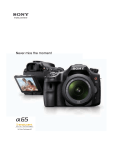
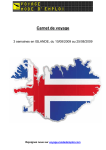

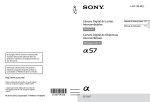
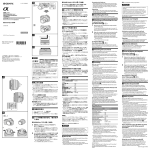
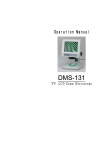
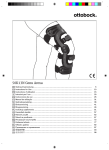
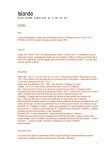

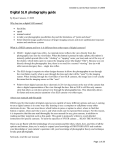
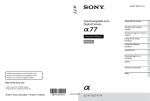
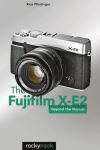
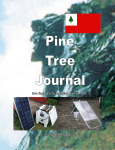
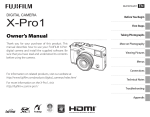
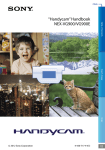
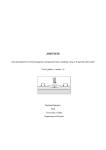

![reply_card [Converted] - TheMysticHelming.mono.net](http://vs1.manualzilla.com/store/data/005649301_1-3a046a309a634867449ff92cdd957a65-150x150.png)

